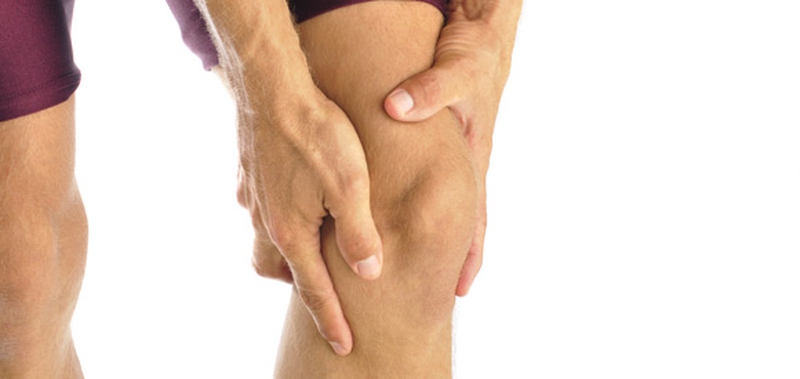Why does my knee hurt? Well, knee pain is common, which accounts for about a third of doctor visits for bone and muscle pain in the United States. Athletes are especially susceptible to this condition with more than half of them experiencing it on an annual basis.
Many kinds of minor knee pain are easily treated with self-care interventions. Physical therapy together with knee braces can also be useful knee pain relievers. Some complex cases may need surgical repairs.

Why Does My Knee Hurt?
Injuries
Knee injuries can affect one of the tendons, ligaments or fluid-filled sacs that are found around your knee joint and in the bones, ligaments and cartilage forming the joint. These include:
ACL injury: This injury is a tearing that occurs in the anterior cruciate ligament (ACL) that is among the four main ligaments connecting your shinbone to the thighbone. This injury is basically common in soccer, basketball players or in people engaging in such sports characterized by a sudden change in direction.
Torn meniscus: The meniscus has a tough, rubbery cartilage and functions as a shock absorber between the shinbone and your thighbone. It can tear when your knee gets twisted suddenly while supporting some weight.
Knee bursitis: These are knee injuries that lead to an inflammation in your bursae (fluid sacs cushioning the external knee joint area to make ligaments and tendons glide smoothly within the joint)
Patellar tendinitis: Tendinitis is an inflammation and irritation of either one or several tendons – the thick and fibrous tissues that firmly attach muscles to bones. Skiers, cyclists, runners and the people involved in jumping activities and sports are prone to inflammation inside the patellar tendon that links the quadriceps muscle at the thigh front to the shinbone.
Iliotibial Band Syndrome
The iliotibial band is a tough tissue piece running from your hip all the way to the shin. It can be irritated through overuse or when it encounters other complications. As a result, it becomes swollen and then induces pain on the external part of the knee.
Osgood-Schlatter Disease
Why does my knee hurt? Osgood-schlatter disease, a complication that leads to a painful bump under the knee at a point where a tendon stemming from the kneecap links the shin could be the cause. It is normally caused by irritation and overuse of the tendon. The pain could come and go with time. It is most common among teenage girls and boys between 13 and 14 years old.
Partially Dislocated Kneecap
A partially dislocated kneecap or what is commonly known as patellar subluxation is a condition where the kneecap slides out of its position leading to swelling and knee pain. It is usually not a consequence of an injury, but a physical defect in your legs. This is especially common among teenage girls.
What to Do If My Knee Hurts
OTC Medications
Over-the-counter medications are useful interventions for knee pain. These include ibuprofen like Advil and Motrin IB among others, acetaminophen like Tylenol and naproxen like Aleve. These are useful in easing knee pain. Some individuals relieve the pain by rubbing creams with a numbing agent such as capsaicin or lidocaine on the affected area.
RICE (Rest, Ice, Compression and Elevation)
Rest: Break off from your usual activities to mitigate recurring strain on your knee. Allow some time for your knee to heal and prevent more harm. Take about a day or two to rest for a minor injury. A serious damage will certainly require a relatively longer recovery time.
Ice: Ice is useful in reducing inflammation and pain. A sack of frozen peas is very useful since it covers the entire knee. You can also make use of an ice pack wrapped well in a thin towel to offer protection to your skin. Even though ice therapy is effective and safe in general terms, don’t use it for more than twenty minutes at a go since it can affect your skin and nerves.
Compression: This is useful in preventing fluid buildup in the damaged tissues and sustains knee stability and alignment. Get a light weight-compression bandage that is self-adhesive and breathable. It should be sufficiently tight to anchor your knee but will not interfere with blood circulation.
Elevation: Swelling can be reduced by propping and elevating your injured leg safely on pillows while sitting in a recliner.
Stretch
Hamstrings and tight thighs can pull your knee, leading to some minor pain. However, stretching will definitely help. The following stretches can really help a lot:
Hamstring stretch: Place your extended leg in a somewhat elevated surface such as a curb and get the opposite arm over the ankle or knee. Stay in this position for about 10-15 seconds and repeat with the other side.
Quadricep stretch: While in a standing position, bend your knee and take the foot top behind you. Pull your heel gently in the direction of your butt. Maintain your chest in an upward state position every time. Stay in this position for 10-15 seconds and do the same for the other side.
When to Seek Medical Help
Contact your doctor on the following occasions:
When your knee can’t bear any weight
When you have a significant knee swelling
When you are not able to fully flex and extend your knee
When you notice a conspicuous deformity around the knee or leg
When you have a fever alongside some pain, swelling and redness in your knee
When you feel that your knee is becoming unstable
If the ankle and foot becomes cold without a feeling of any pulses
When you don’t have any sensation below the injured area
If a knee injury does not heal with home care interventions of RICE (rest, ice, compression and elevation)
If the swelling and pain continues to recur
If you have a swollen joint that is red and feels warm and you have a related fever, as it might it may indicate some sort of an infection

View All Comments /Add Comment